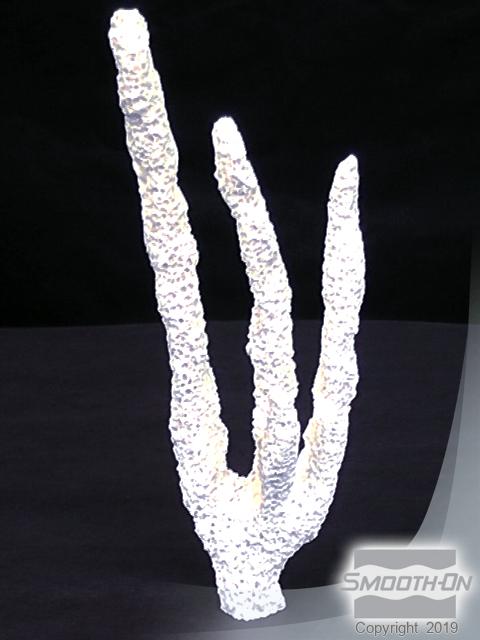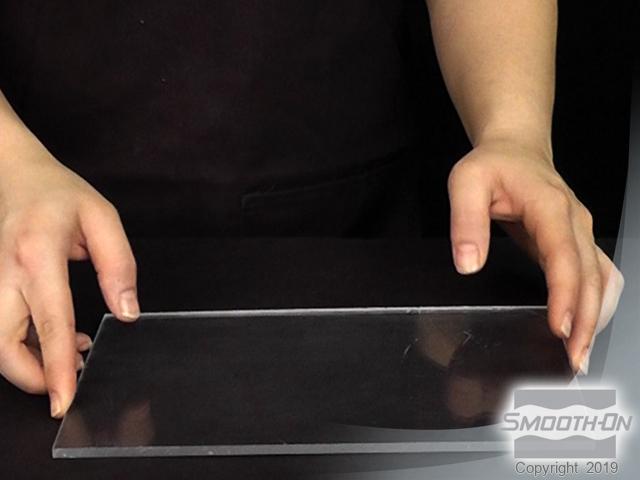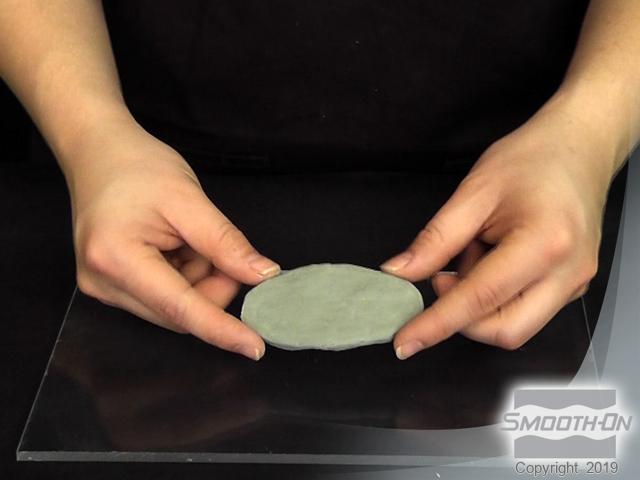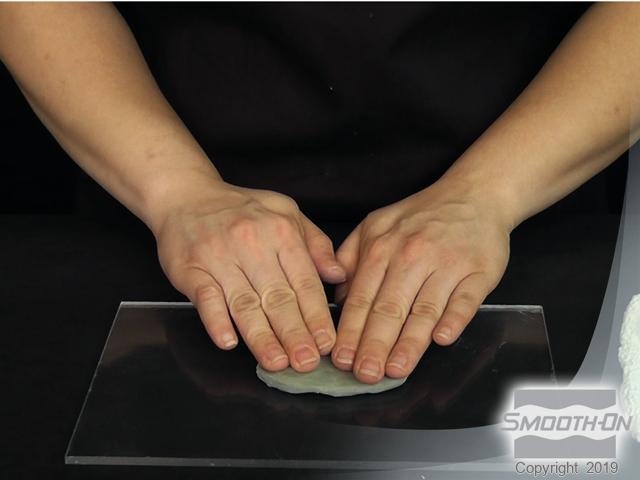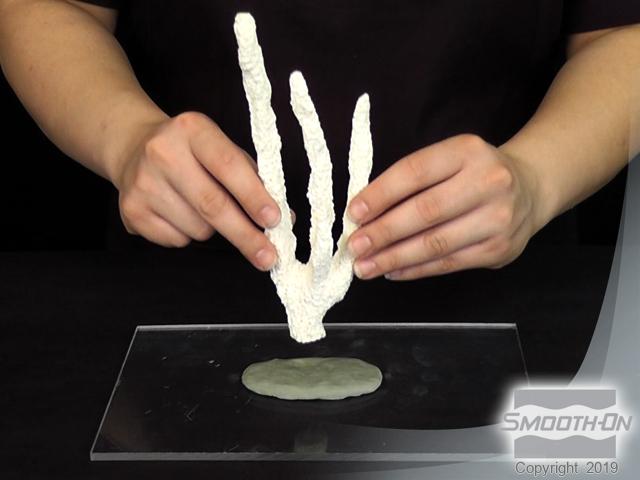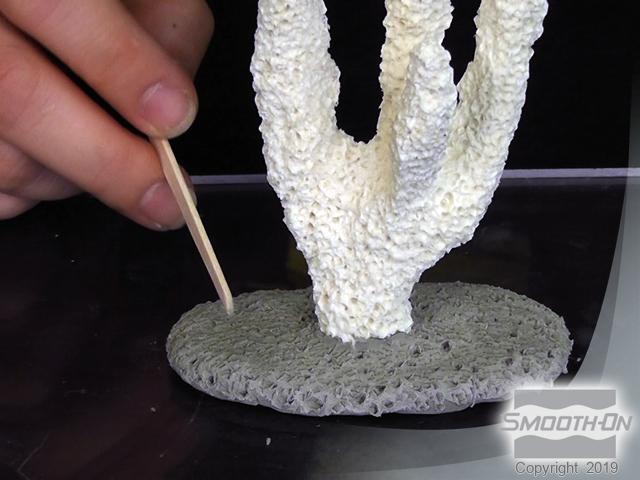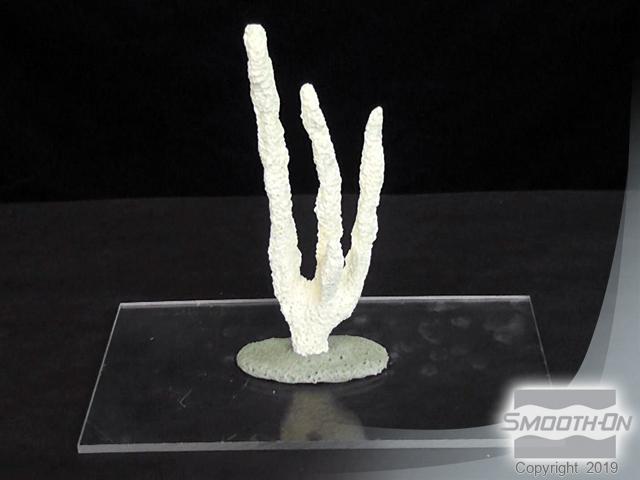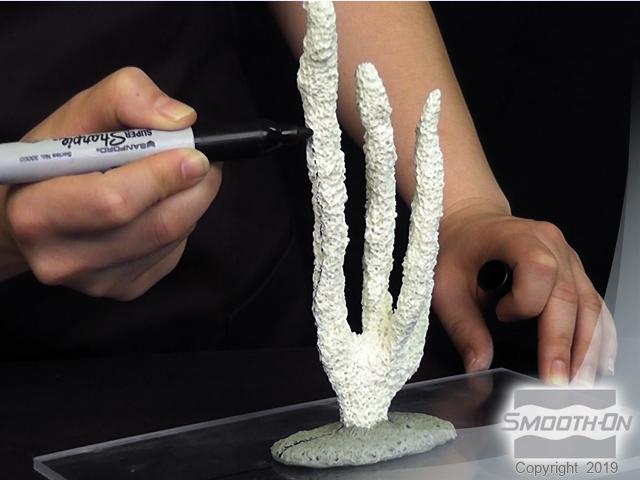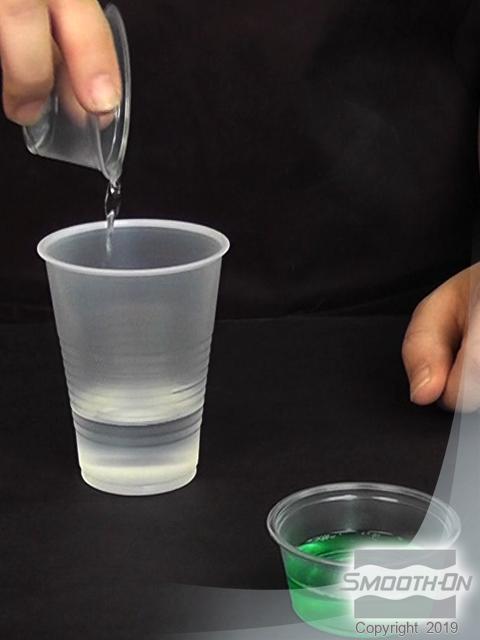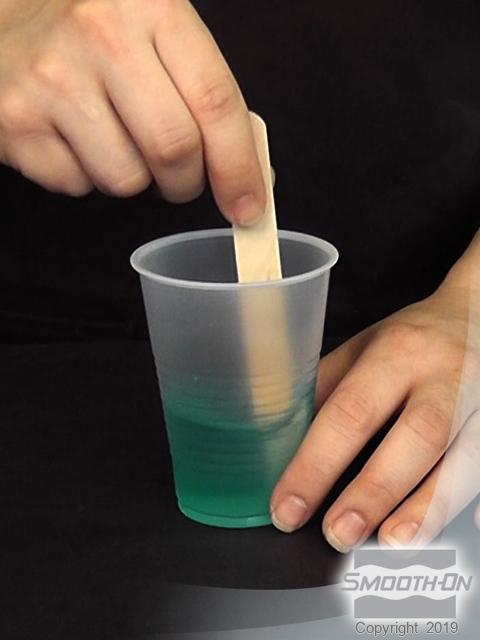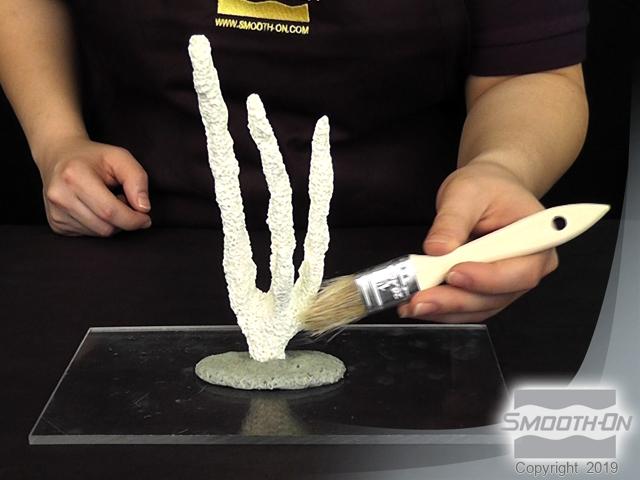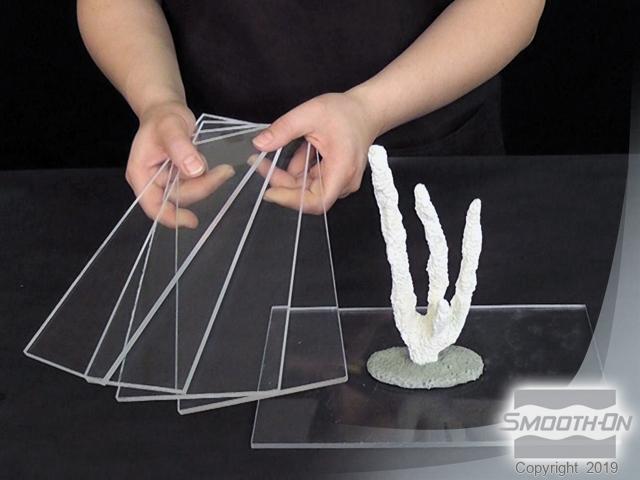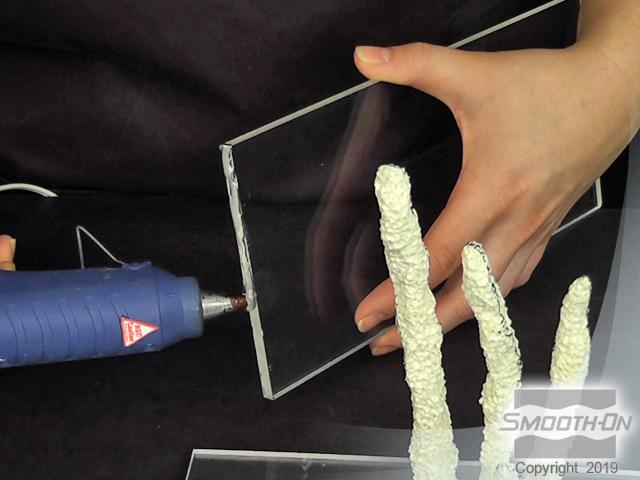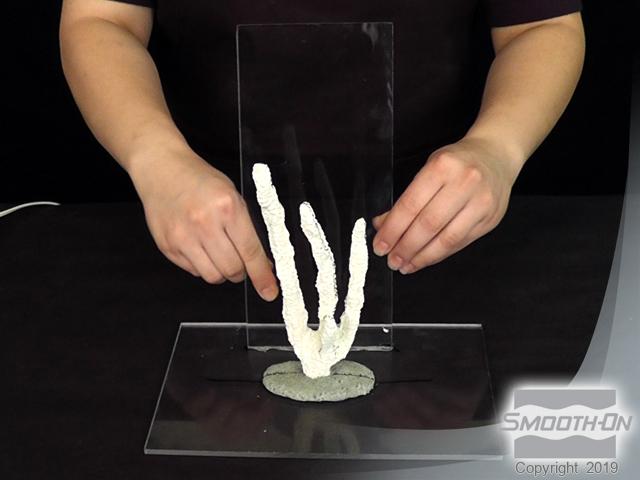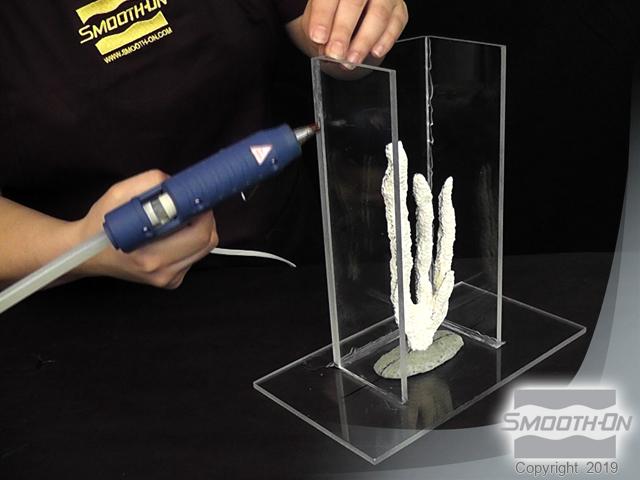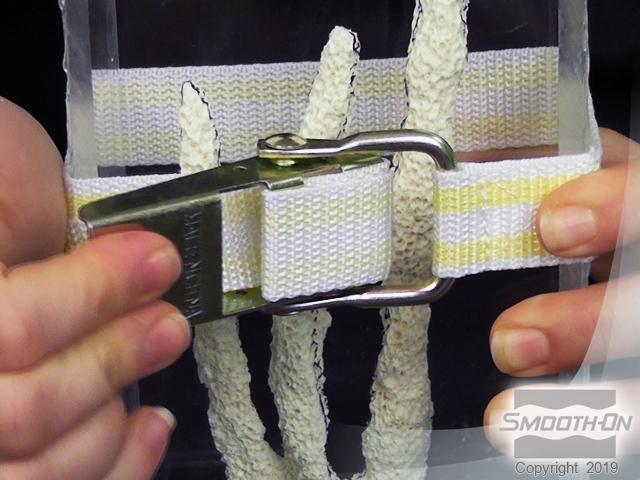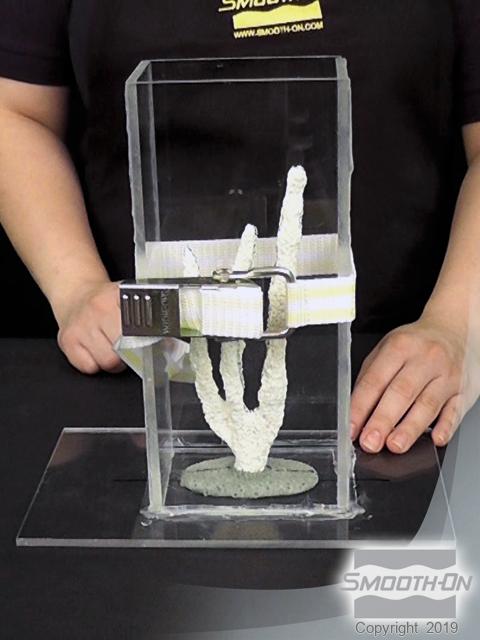How To Make Finger Corals Using Smooth Cast™ Plastic
Step 1: Preparing Model for Molding
Begin with an original finger coral model. Use a rigid piece of clear acrylic as a mounting board. Since the coral model is not free standing, a base needs to be created out of non-sulfur based modeling clay.
The clay base will stabilize and balance the model during mold making process. Create an oval pancake shape, proportional in size to the coral model, out of clay and pressed it till it is secured to the acrylic board. Center the coral model and embedd it into the modeling clay. To add texture to the clay base use a broken popsicle stick. Texture in clay base can be made to match texture in finger coral.
Pour liquid mold rubber over the model and allow it to cure as a solid block of rubber. Once the rubber cures, extract the original model by cutting the block of rubber using a razor knife. The cut line must be marked on the model before pouring rubber. Use a Sharpie permanent marker to draw a parting line on the original where you intend to cut the mold when it is time to demold the original.
Since the original has a lot of detail, a soap-based release agent will get into the crevices better. Combine 2 parts isopropyl alcohol and 1 part dish washing soap. Mix the alcohol and soap together until blended thoroughly. Stipple the release agent into the detail of the original model. Let dry a minimum of 30 minutes. Use a brush to lightly stipple the agent to the surface of the original.
Use acrylic to build the mold box. Position the mold box sides so that the walls are at least ½ inch (1 cm) away from outer most points of the coral model. Leave 1/2 inch (1 cm) clearance over the highest point of the model. Hot glue the edges of the mold walls to the base board. Be sure the walls are completely sealed to prevent the silicone from leaking out of the seams. Continue hot gluing until all the walls are built.
Use a mold strap reinforce glue line and hold all mold walls together. When the mold is sealed and strapped, it ready for the mold rubber to be poured.
